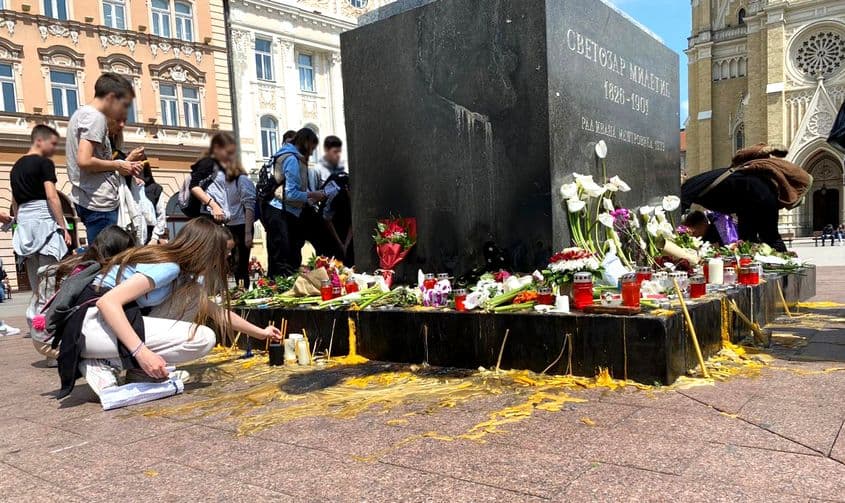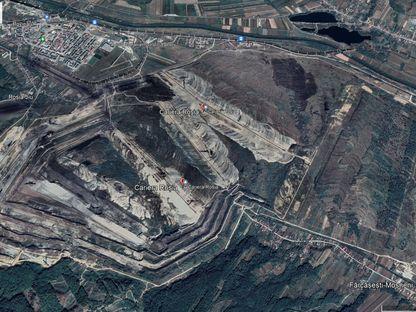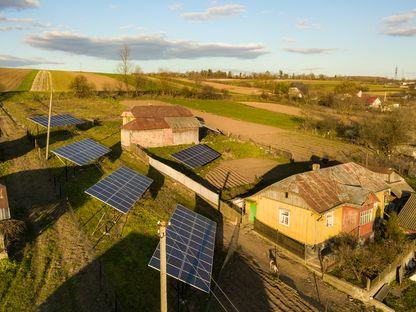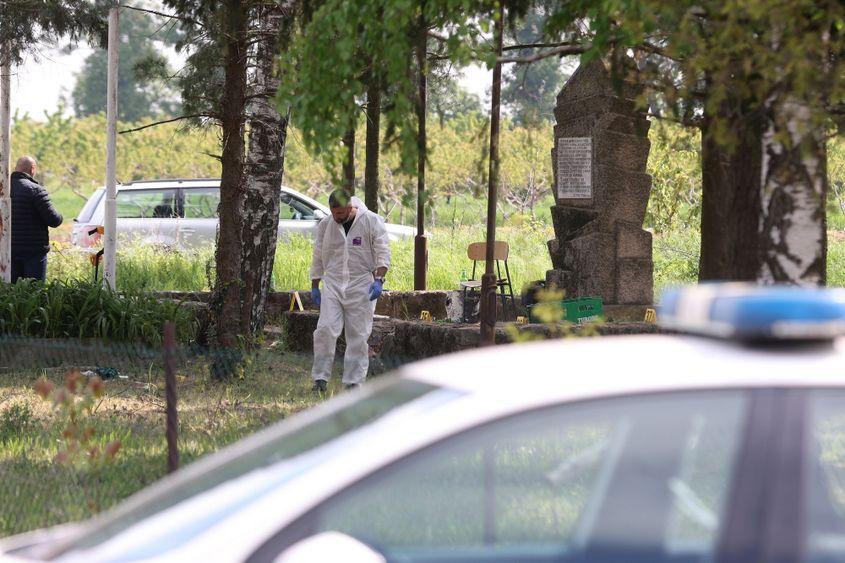Children embrace in front of the "Vladislav Ribnikar" primary school in Belgrade, Serbia, May 4, 2023. A teenage student shot dead seven girls, a boy and a security guard using two pistols he had taken from his father. Six children and a teacher were also injured in the attack. EPA/ANDREJ CUKIC
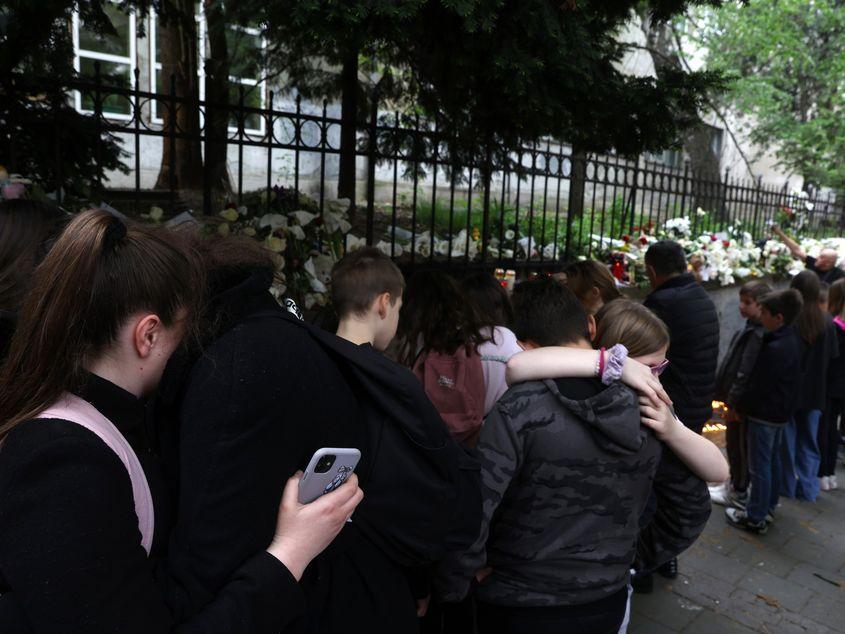
Children embrace in front of the "Vladislav Ribnikar" primary school in Belgrade, Serbia, May 4, 2023. A teenage student shot dead seven girls, a boy and a security guard using two pistols he had taken from his father. Six children and a teacher were also injured in the attack. EPA/ANDREJ CUKIC
05/05/2023
School shooting in Serbia. The unprecedented tragedy and its unethical approach by the media and the politicians
The author of this correspondence from Serbia for PressOne is Ivan Subotić, journalist and fact-checker for the Serbian portal FakeNews Tracer (fakenews.rs).
On the first Wednesday of May, a large number of citizens gathered in the squares of many cities in Serbia. Under normal circumstances, among the reasons for a gathering such as this might be the success of Serbian athletes, politicians' rallies, concerts or protests. However, this Wednesday in Serbia was unusual. Crowds of people gathered to express their condolences to the families of the victims of the unprecedented tragedy that happened in an elementary school in Belgrade: a thirteen-year-old boy put two guns and four Molotov cocktails in his bag instead of school supplies, and headed for his school. There, he killed eight of his peers and a school security guard, and wounded six more children and his history teacher. The latest information about the wounded says that one girl is in serious condition while the others are recovering.
Students in Novi Sad commemorate their classmates killed in Belgrade a few days ago. Photo: Ivan Subotić
Unfortunately, the escalation of violence in Serbia did not end with the school tragedy. On the night between Thursday and Friday, a twenty-one-year-old man opened fire on people in the villages around the town of Mladenovac in central Serbia. According to official information from the Serbian Ministry of Internal Affairs, eight people were killed and another 14 were wounded. According to unverified media reports, among the dead is also a boy born in 2008. The suspect was arrested this morning in the vicinity of the city of Kragujevac.
The tragedies that shook the country are now being cynically exploited by much of the media, the president and other authorities. Everyone wants to gain something, but no one wants to take responsibility.
Armed policemen stand guard in the village of Dubona, near Mladenovac, Serbia, May 5, 2023. An armed attacker, identified by authorities only as U.B., killed eight people and wounded fourteen in an attack on the evening of May 4, 2023. EPA/ANDREJ CUKIC
How did the media cover the school attack?
As countless times before, in other crisis situations, instead of empathy and ethics in reporting, the Serbian media showed their dark, profit-oriented side. As reported by the Serbian police, although there is no official motive for the crime committed, nor has the boy announced anything, the media in Serbia speculated about various possibilities, using unofficial information. Many media reported various stories, including that the suspect had received a bad grade in history and therefore committed the crime, and speculations that he was a victim of peer violence. However, there is still no definitive information about the motives of the crime.
According to a study by the Reporters Without Borders organization, in 2023, Serbia fell from 79th to 91st place according to the media freedom index, and journalists suffer political pressure and worry about the lack of punishment for the crimes committed against them. The Serbian media scene is highly polarized and political, and the most read and watched media are the pro-regime private media, known for their low levels of ethical standards and the distribution of unverified news.
Mulți ne citesc, puțini ne susțin. Fără ajutorul tău, nu putem continua să scriem astfel de articole. Cu doar 5 euro pe lună ne poți ajuta mai mult decât crezi și poți face diferența chiar acum!
However, in the face of this crisis situation, even the media which largely respected professional ethical standards succumbed. The online edition of cable television Nova announced only a few hours after the crime that "the history teacher Tatjana Stevanović was killed this morning in a shooting at the Vladislav Ribnikar school", although there was no confirmation of this claim at the time, and later it turned out that the teacher had not been killed at all.
The pro-regime tabloids made sure that the full name of the suspected boy was published just a few hours after the crime was committed, with headlines like "SIX KILLED IN ONE CABINET ALONE: He broke into a history class, the first target was the teacher, and then... (PHOTO)" . The media didn't stop there, and headlines such as the following appeared: "THE EVENING BEFORE THE MASSACRE, KOSTA HAD A BIRTHDAY PARTY WITH THE FRIENDS HE KILLED. New details are blood-curdling. Neighbors: What should we do if we see him here?" Videos of disturbing content were published with titles such as "BLOOD ON CHILDREN'S CLOTHES - Unpublished footage after the massacre at the school in Vračar".
Even the next day, the media did not stop exploiting the tragedy in an unethical way. In its print edition, the daily Večernje novosti published the full names and surnames of both the crime victims and the wounded, while the most widely read pro-regime tabloid Informer did the same on its front page, shortening the surnames to the first letter.
All these represent serious violations of the Code of Ethics of Serbian journalists, which stipulates that journalists are obliged to respect and protect the rights and dignity of children and victims of crime. Also, the code stipulates that when reporting on a committed criminal act, journalists must be careful not to disclose the identity of the victim and the identity of the suspect in the conversation with potential witnesses.
The state officials’s reactions, on the same note as the tabloids. The Minister of Education blames „Western culture” for the massacre
Coal Mining Expansion Leads to Deforestation: Over 470 Hectares of Forest Cut Down in Gorj, Romania
Over the past six years, more than 470 hectares of national forest land have been allocated by the government, without compensation, to the Oltenia Energy Complex (CEO) for the expansion or opening of new coal mines.
The not-so-green Romania. The state delays settlements for photovoltaic panels by 2 years
PressOne reviews the main dysfunctions in the production, consumption and distribution of energy from renewable sources, as revealed by discussions with consumers and data provided by official sources at the request of our editorial office.
Like in previous crisis situations, officials at press conferences proved that the media had someone to look up to. The Minister of Education Branko Ružić was the first to appear in the media, and in his speech he practically blamed the influence of Western culture in society for the tragedy, thus igniting similar narratives in the media. At the same conference, Veselin Milić of the Police Department of the City of Belgrade also made the mistake of revealing the full name and surname of the suspect boy and thus confirming the information in the media, which at the time had already made this data public.
Later in the day, the President of the Republic of Serbia, Aleksandar Vučić, addressed the people and in his speech to the journalists justified the actions of all state institutions, pointing out that they had done their job well even before the tragedy occurred, and referring to himself as a "concerned parent of all children in Serbia".
People gather to leave flowers and light candles in memory of the victims in front of "Vladislav Ribnikar" primary school in Belgrade, Serbia, May 4, 2023. A teenage student shot dead seven girls, a boy and a security guard using two guns he had taken from his father. Six children and a teacher were also injured in the attack. EPA/ANDREJ CUKIC
Un newsletter pentru cititori curioși și inteligenți.
Sunt curios
During his speech, Vučić revealed the approximate income of the suspect boy's parents, but also read the data from his medical record in front of all the media, in an effort to prove that no peer violence was committed against the boy and that he had no psychological problems.
Where did the boy get the weapon and how is the possession of weapons regulated in Serbia?
According to research by The Small Arms Survey program at the Geneva Institute for International and Development Studies (IHEID) published in 2018, Serbia, together with the neighboring country Montenegro, shares the third place in the world in the estimated rate of civilian ownership of firearms.
As the director of research at the Belgrade Center for Security Policy, Predrag Petrović, explained to the daily newspaper Danas, „political and socio-economic instability in the Balkans in the last 30 years and frequent daily political threats of a new war have led to the fact that many citizens are not ready to give up their weapons. They are saving them for «God forbid»."
Also, Serbia is often rocked by news related to the export of arms, which has been on the rise in recent years. In the middle of the summer of 2020, Serbia was shaken by a news report related to the export of arms to Armenia, which is in constant more or less intense conflict with Azerbaijan over the territory of Nagorno-Karabakh. This year, information appeared in leaked American intelligence documents that Serbia exported weapons to Ukraine, which the Serbian authorities denied.
According to the Law on Arms and Ammunition of the Republic of Serbia, pistols like the one used by the boy in the school shooting in Belgrade belong to the B category of weapons that can be acquired, held and carried but only with valid permits from the competent state authority. The 9mm semi-automatic pistol that the boy fired from, as well as the small-caliber pistol that he was carrying in his bag, had a valid permit from the competent authorities in Serbia, and belonged to the boy's father, who claims that he kept them in a safe, the Serbian police said.
A crime scene investigator checks the situation in the village of Dubona, near Mladenovac, Serbia, May 5, 2023. An attacker identified by authorities only as U.B. killed eight people and wounded fourteen in a drive-by shooting attack on the evening of May 4, 2023. EPA/ANDREJ CUKIC
In order for someone in Serbia to legally own a firearm, they must meet a number of conditions prescribed by the aforementioned law. In addition to the provisions related to the age of the gun owner and the citizenship of the Republic of Serbia, there are also regulations regarding the health capacity of the gun owner, his/her firearm training, a justification of the reasons for owning a gun and the conditions for the safe accommodation and storage of the weapons. Also, anyone who wishes to own firearms in Serbia must not have been legally sentenced to imprisonment for attempted murder, crimes against the freedoms and rights of others, and so on.
How did this happen to us and could we have foreseen this escalation of violence?
The recent months in Serbia were marked by an increase in violence in schools. Due to frequent peer violence and conflicts between teachers and students, the Working Group for Violence in Schools agreed on measures to combat violence in schools. November last year was marked by a video showing how students of the technical high school in the town of Trstenik harass their teacher and slip her chair during class. Then, in March of this year, the tabloid media was flooded with a video from the city of Smederevo showing a teacher and a student fighting in class.
Frequent violence in schools unfortunately escalated in May with a tragedy that has never been recorded in the history of Serbian education. According to media reports, on the same day a boy in an elementary school in the Serbian province of Vojvodina threatened other students that he would commit a massacre like the one in Belgrade. Also, the day after the tragedy, there was a stabbing in a Belgrade high school where an ex-student of the school, born in 2007, injured a teacher and another student. On the same day, after a minute of silence in a classroom in the town of Obrenovac, a student took out a plastic gun and the police were called.
The Serbian education system is in a major crisis. In his speech in the aftermath of the atack, the President highlighted 10 measures that would be adopted after the tragedy in the elementary school. Among them, the introduction of a moratorium on the issuance of permits to keep and carry weapons in the next two years, the revision of all issued permits to keep weapons, control of the way in which persons who have the permit carry weapons, the possibility of lowering the age of criminal responsibility from 14 to 12, mandatory six-month drug tests in high schools, and others.
The Government of the Republic of Serbia adopted a series of measures yesterday. But these measures must come into force quickly. At the same time, the media should be more responsible and cover this situation in the most ethical way possible, so as not to contribute to further escalation of violence.
How did the school attack happen?
According to the data presented by police officials in Serbia, the student of the Belgrade elementary school "Vladislav Ribnikar", who is suspected of nine murders, came to school a little after half past eight in the morning. He immediately took out his gun and shot the school security guard first. Then he turned towards the girl who was on duty that day and who was also in the hall of the school building and shot at her and at two other girls who happened to be in the hall at that moment. None of them survived the attack.
After this, the boy walked down the corridor of the school towards the classroom where at that moment the history class was taking place. As described by the head of the Police Department of the City of Belgrade, Veselin Milić, the boy then replaced the gun charger and entered the classroom where his classmates and the history teacher were. There, according to the police, he killed five of his peers, four girls and one boy, and wounded a teacher and several other students.
By that time, the school's deputy principal had already called the police and reported the shooting. However, after the shooting, the suspected boy left the school, put his weapon on the ground and called the police. He introduced himself and reported that he committed the murders at the school. After this call, the police arrived at the scene of the tragedy and took the boy into custody.
What the police did establish and announced to the public testifies to the fact that the suspected boy had been planning an attack on students at his school for at least a month. A list of the children he planned to liquidate was found in a room in his apartment. There were several students from different departments on that list and they were arranged by priority for liquidation. In addition to this, the police also found a drawn sketch that reveals the boy's plan of movement around the school. The head of the Police Department of the city of Belgrade also revealed that the boy chose May 3rd to implement his plan because on that day his class had a history lesson in the classroom that was near the entrance to the school.
What punishment (does not) await the boy and his parents?
Immediately after it was announced that a tragic incident occurred in an elementary school in Belgrade with several victims, the Serbian public began to speculate about what sanctions the minor perpetrator of the crime would suffer. Soon, the Higher Public Prosecutor's Office resolved the dilemmas about the boy's potential criminal liability. The statement of the prosecution states that "according to the Law on Juvenile Offenders and the Criminal Legal Protection of Minors, K.K. (the boy) is criminally irresponsible because he has not reached the age of 14".
"The on-site investigation was carried out by the on-duty deputy public prosecutors of the Department for General Crime and the Department for Juveniles of the Higher Public Prosecutor's Office in Belgrade, who ordered that a statement be taken from K. K. in the presence of an employee of the Center for Social Work and that a medical examination be carried out, after which the Center will decide what measures to take further under its jurisdiction", stated the Prosecutor's Office.
This institution also states that the boy's father "was detained for up to 48 hours on suspicion of having committed the criminal offense of Serious Offenses against General Security", which carries a penalty of up to 12 years in prison . He can also be sanctioned under the Law on Arms and Ammunition for inadequate storage of firearms with a fine of up to 150,000 dinars (slightly less than 1300 euros) or a prison sentence of up to 60 days.
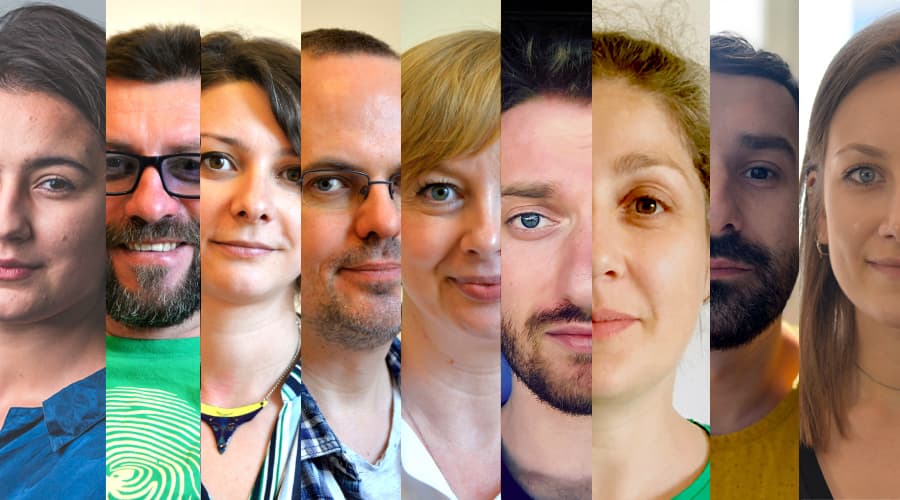
Avem nevoie de ajutorul tău!
Mulți ne citesc, puțini ne susțin. Asta e realitatea. Dar jurnalismul independent și de serviciu public nu se face cu aer, nici cu încurajări, și mai ales nici cu bani de la partide, politicieni sau industriile care creează dependență. Se face, în primul rând, cu bani de la cititori, adică de cei care sunt informați corect, cu mari eforturi, de puținii jurnaliști corecți care au mai rămas în România.
De aceea, este vital pentru noi să fim susținuți de cititorii noștri.
Dacă ne susții cu o sumă mică pe lună sau prin redirecționarea a 3.5% din impozitul tău pe venit, noi vom putea să-ți oferim în continuare jurnalism independent, onest, care merge în profunzime, să ne continuăm lupta contra corupției, plagiatelor, dezinformării, poluării, să facem reportaje imersive despre România reală și să scriem despre oamenii care o transformă în bine. Să dăm zgomotul la o parte și să-ți arătăm ce merită cu adevărat știut din ce se întâmplă în jur.
Ne poți ajuta chiar acum. Orice sumă contează, dar faptul că devii și rămâi abonat PressOne face toată diferența. Poți folosi direct caseta de mai jos sau accesa pagina Susține pentru alte modalități în care ne poți sprijini.
Vrei să ne ajuți? Orice sumă contează.
Share this


